
Brianstarts a miniseries using the TRX Suspension Trainer with the first half of areaching progression, four single-leg, upper-body exercises that engage theposterior chain and increase hip flexion.
See 'RelatedResources' below for past Functionally Fits (including the TRX miniseries) andother exercises and training tips.
Execution
Begin with one foot suspended in the TRX and the other foot facing forward (see below). Move further away from the fulcrum to add additional stability challenge. I begin using a small cone (4 1/2", shown in figures below) for proprioceptive feedback and position it at least eight to 12" from the stance foot. As the client is able, he/she can reach toward the floor as well.
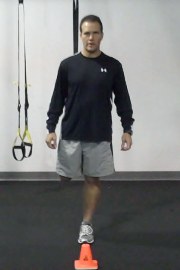 |  |  |
 | 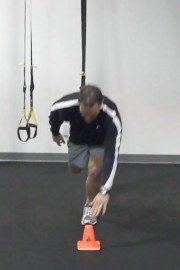 | 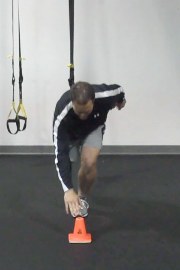 |
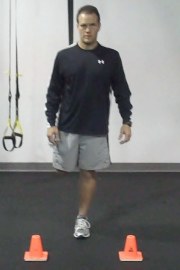 | 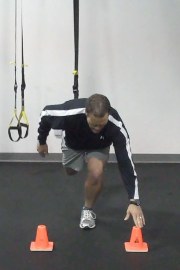 | 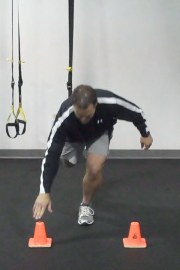 |
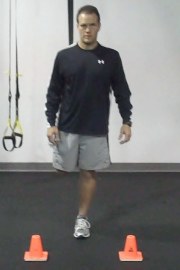 |  |  |
It should be noted that I start clients with these reaches on the floor, then a small box/step, next a BOSU and finally move to the TRX. Balance and stability with a fixed segment should be a prerequisite and demonstrated prior to integrating the suspended TRX progressions that follow.
You may perform one to two sets of each exercise for five to 10 quality reps. The client should be advised to maintain the knee in alignment with the foot at all times. Initially, you may need to stick with level one. Ultimately, only move forward once they demonstrate proper form with the prior activity.
Application
This exercise is an effective way to engage the posterior chain and encourage increasing hip flexion. All of your female cutting and jumping athletes need more gluteal and hamstring training to prevent ACL injuries, and recent research indicates shifting the center of mass forward with landing and deceleration is beneficial in decreasing quad moments.
Additionally, the exercise demands sufficient anti-rotation (deceleration) strength to maintain balance and control, teaching the client to reduce valgus. This added benefit addresses hip/knee/ankle stability. I also like to increase the distance between toes and cone to improve dynamic ankle mobility, most notably dorsiflexion, as reduced dorsiflexion may lead to increased pronation and tibial rotation.
Precautions
For safety and to avoid overstressing irritable tissues, you may want to modify, screen or exclude clientele (on a case-by-case basis) with the following conditions:
- Marked knee or hip arthritis
- Meniscus pathology
- Hip labral tears
- Active lumbar disc pathology/sciatica
Brian Schiff, PT, CSCS (www.brianschiff.com) is a licensed physical therapist, respected author and fitness professional. He became a Certified Strength and Conditioning Specialist (CSCS) in 1998. In 2000, he opened his own personal training and sport-specific conditioning facility, Fitness Edge, in Dublin, Ohio. Brian has presented at several professional conferences and seminars on injury prevention and sport-specific training.
















